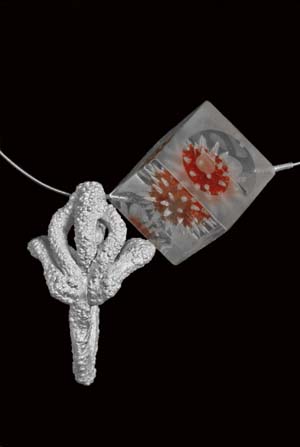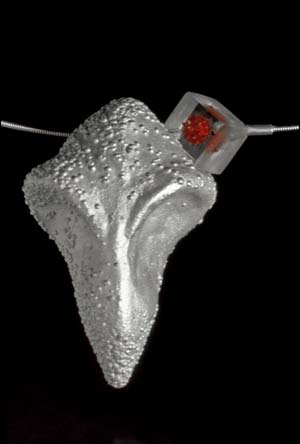
This is the beginning of a series I am calling Collector’s Choice. I asked each collector ‘What is your favorite piece of jewelry in your collection? And how do the qualities reflected in that piece describe something about your whole collection?’ One of the first to answer the question was Ron Porter. He is a smart and informed collector who rarely leaves Columbia, South Carolina, but despite his out of the way location seems to always know what is going on. He served on the AJF board for a number of years and has contributed to the content of the website and blog. He has a strong voice and passionate opinions. Here is his response.
It must have seemed an easy question – ‘Will you tell us about your favorite piece of jewelry from your collection?’ Easy? Impossible! I imagine that most of you would have the same ‘Sophie’s choice’ dilemma bestowing that distinction. So instead I agreed to write about one piece of jewelry that I believe exemplifies our needs and desires with respect to collecting contemporary art jewelry.
Some of you have read on the AJF website about my love of stories. Narratives, myths, fables, folk tales – any good page turner will do. Kranitzky and Overstreet review here. Although my love affair with ‘message’ jewelry continues unabated, I find that I may not be just a one-trick pony. Over the years I have come to treasure all sorts of contemporary work as long as some vital elements are present – craftsmanship above all, content when called for and contentment. This last element may puzzle; I mean the feeling that settles within you when initial excitement and irrational desire give way to the comfort that makes a good decision enduring. linking the review of Katja Prins’ book here?
Now, back to narration. It has been both our first and enduring love in all that we collect. Other work complements but has never replaced the tale well-told. But whose work exemplifies? Bruce Metcalf? Keith LoBue? Elizabeth Chenoweth? Etc., etc., etc.? Certainly, but choose one work of one artist I am told. So here goes.

It is as relevant today as it was when made in 1993. Today the ‘Gay Plague’ has devastated heterosexual Africa, continues to infect millions and has rested disproportionately with African-Americans in this country. The story continues to resonate, even as new chapters are written. This is what helps to make many stories stronger. Good sequels abound for good reason. When my European friends decry the American penchant for narration in contemporary jewelry, I just smile knowingly, as if I am in on the joke and they are not.
Keith did not concoct this story however. He responded to it in the best way he could, through his life’s chosen work. And not just a token work either; not the ‘one from column A and one from Column B’ temporal piece to satisfy the headlines: He created a series of more than a dozen pieces to address the varied aspects of this new disease – ignorance, fear, loathing, loving and death. Each work stands strongly on its own within the cohesive whole.
Six Months Wasted is a six-part neckpiece which demonstrates the ravages of the infection. Strung on piano wire of ever-decreasing gauges are stylized human heads and virus particles. Month one shows the asymptomatic, healthy, recently infected man as well as the tiny, almost beautiful, virion which will soon wreak havoc upon him. Months two-through-six reveal the wasting and disappearance of this once vital human being as the virus grows simultaneously to occupy more space, both physically and figuratively. Powerful to behold; powerful to wear. Yes, jewelry can be powerful in-and-of itself.
Many times I play a game when I look at art. I try to discover something that makes the work unique to the artist – something that no other artist with the same ideas and same intent would do. Keith’s ‘something’ lay in those seemingly unimportant piano wires. Something to support the ‘jewels’ took on meaning beyond the structure and mundane means-to-an- end requirements. The wires wasted as well as the individual. HIV would not settle for the few. It was a killing machine that would change the face of humanity. A perfect piece of jewelry about the perfect villain.
If you are still with me, you must think that this is an incredible burden to place on a piece of jewelry. I agree with you. But for this collector the burden helps to exemplify the important place that jewelry CAN inhabit. Must it? No. Should it? Perhaps. Is it important that it might? Absolutely.






